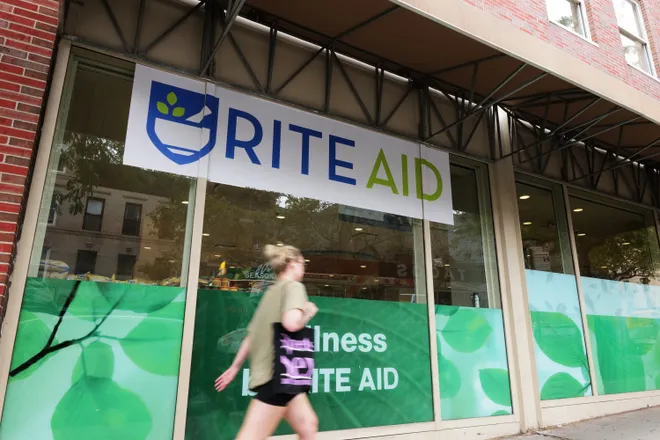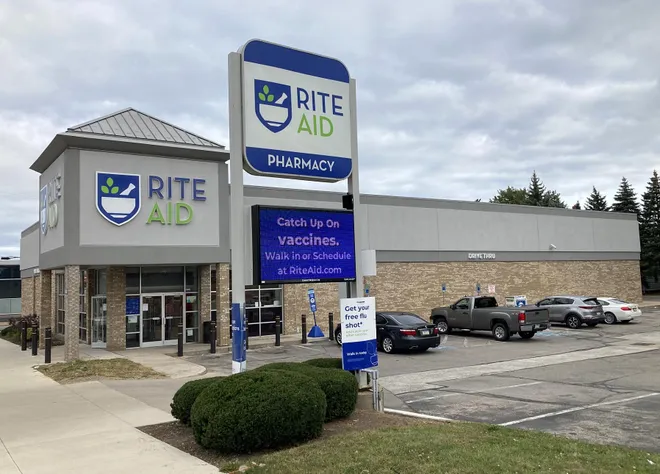Rite Aid has filed for bankruptcy. What it means for the pharmacy chain and its customers
Rite Aid filed for bankruptcy Sunday and plans to close an untold number of stores across the United States as it battles slumping sales and a slew of opioid lawsuits.
One of the largest pharmacy chains in the country, Rite Aid has in recent years struggled to keep up with bigger drugstore chains like CVS and Walgreens as it faces legal hurdles related to accusations that it helped fuel the raging opioid epidemic.
Rumors of its impending plans to file for bankruptcy began circulating at the end of August amid the company’s mounting billions of dollars of debt, declining sales and more than a thousand federal, state and local lawsuits claiming it filled thousands of illegal prescriptions for painkillers.
Here’s what you need to know about the filing, the legal woes and Rite Aid’s plans to stay afloat.
Boo Buckets:McDonald's brings back its Boo Buckets for Halloween this week
What does Chapter 11 bankruptcy mean for Rite Aid?

The company filed for Chapter 11 bankruptcy protection in New Jersey.
The Chapter 11 filing means Rite Aid plans to stay in business while restructuring its debts through a court-controlled process. Rite Aid even said in a Sunday statement that it has raised $3.45 billion in financing from lenders as it continues to operate its stores while in bankruptcy.
When the company last filed a financial report in June, it had $3.3 billion in debt, compared to the $135.5 million in cash it had on hand.
In the statement about Chapter 11 filing, Rite Aid laid out a restructuring plan that includes closing underperforming stores.
UAW Strikes:How does autoworker union pay compare to other hourly jobs?
What do we know about store closures?

Founded in 1962, Philadelphia-based Rite Aid is one of the largest pharmacy chains in the nation with more than 2,000 stores in 17 states.
Most customers won’t have to worry about the bankruptcy filing disrupting their ability to shop or fill prescriptions at their local stores — unless, of course, that store is now slated to close. Rite Aid, which has closed several stores in recent months, said in its media release that it's preparing to close more.
"Rite Aid regularly evaluates its store portfolio to ensure it is operating efficiently while meeting the needs of its customers, communities and associates," the company said in a statement. "These efforts will further reduce the company’s rent expense and are expected to strengthen its overall financial performance."
Joy Errico, a spokesperson for Rite Aid, declined to release further information about how many stores were slated to close or what the timeline for closures would be when reached Monday morning by USA TODAY.
Rite Aid said in the statement that it will communicate with customers of stores that will be closing and ensure they are able to get access to the services they need at other nearby locations. Employees at closing stores will also be transferred "where possible," Rite Aid said.
What other plans does Rite Aid have?
Rite Aid plans to use the bankruptcy to resolve its legal disputes and also sell some of its businesses, including prescription benefit manager Elixir Solutions that it bought in 2015 for $2 billion.
As part of the bankruptcy plan, Rite Aid appointed on Sunday a new CEO to lead restructuring, Jeff Stein, who will also serve as a member of its board. Elizabeth Burr had been serving as interim CEO since January and will remain on the company’s board, Rite Aid said.
Stein, the founder of financial advisory firm Stein Advisors, said in a statement the company plans to remain in business for the long term.
“My priorities will include overseeing the actions now underway to strengthen the company’s financial position and further advance its journey to reach its full potential as a modern neighborhood pharmacy,” Stein said in the statement. “I have tremendous confidence in this business and the turnaround strategy that has been developed in recent months.”
Inflation:How inflation is reshaping what employees need from their benefits
Why is Rite Aid facing opioid lawsuits?
Rite Aid's legal troubles related to its alleged role in the nationwide deadly abuse of opioids only further contributed to its mounting debt.
The many lawsuits filed against Rite Aid accuse the company of knowingly filling prescriptions for the addictive painkillers that did not meet legal requirements. In March, the Justice Department filed a complaint against Rite Aid asserting that it violated the Controlled Substances Act by filling prescriptions for excessive quantities of prescription pain killers that had “obvious red flags.”

The Centers for Disease Control and Prevention says the rise in U.S. opioid overdose deaths can be tied to the uptick in opioid prescriptions starting in the 1990s. Drug overdose deaths from prescription opioids jumped from 3,442 in 1999 to 16,706 in 2021, according to data from the National Institute on Drug Abuse.
Contributing: Bailey Schulz
Eric Lagatta covers breaking and trending news for USA TODAY. Reach him at elagatta@gannett.com
Disclaimer: The copyright of this article belongs to the original author. Reposting this article is solely for the purpose of information dissemination and does not constitute any investment advice. If there is any infringement, please contact us immediately. We will make corrections or deletions as necessary. Thank you.







